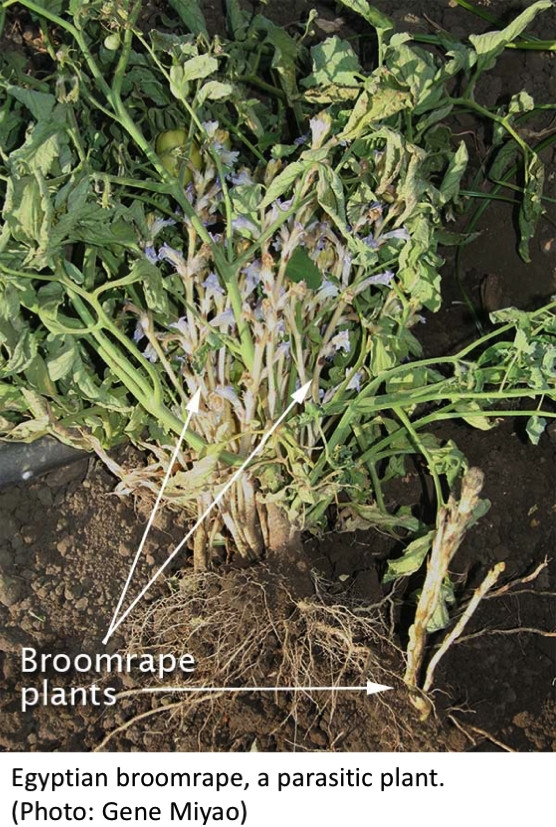Guest authors Tunyalee Martin, with the UC IPM Program, and Gene Miyao, farm advisor, describe a parasitic plant that has been found in some parts of Yolo County and the Delta. Growers of all annual crops should be on the lookout and contact their local Ag Commissioner if they come across any in their fields.
Help in the fight against invasive species by learning more about California Invasive Species Action Week. Article from Martin and Miyao with additional information below:
Watch out for parasites! (Wait, in my tomato field?)
No, I'm not talking about ticks or fleas on your dog. Actually, I'm talking about a parasitic weed that lives by attaching itself to the roots of other plants. This parasite is broomrape, a plant that has no chlorophyll and lacks conspicuous leaves. In fact, you'll only likely see it aboveground when it's flowering.
Broomrape has quite a rap sheet. Egyptian broomrape, whose first detection in the U.S. in 2014 was in California, is on the federal noxious weed list. Branched broomrape is on the California noxious weed list (A rating = eradication, containment, rejection, or other holding action); on the federal noxious weed list; and is listed as noxious in 10 other states. Broomrape has the potential to damage many economically important crops in California including bell pepper, cabbage, carrot, celery, eggplant, legumes, melons, potato, tomato, and sunflower.
The California Department of Food and Agriculture describes branched broomrape as “terrible” and justifies the A rating because it: 1) could establish itself widely in California, 2) can parasitize many plant hosts (both agricultural crops and many common agricultural weeds), 3) produces many tiny seeds (over 100,000 and only 0.3 mm long) that can easily disperse, 4) has a high potential to harm to commercial agriculture, and 5) could also harm rare or endangered wild plants.
As a parasitic plant, broomrape acquires the nutrients and water it needs from the host plant. You might observe symptoms of stunting or yellowing in your crop plants, but broomrape grows and attaches underground and the only part of broomrape that you may observe aboveground are the flower spikes.
If you see these weeds, contact your local agricultural commissioner or for identification, your UC Cooperative Extension office. Use certified seed and clean nursery stock.
Resources:
California Invasive Species Action Week
USDA-APHIS factsheet for Egyptian broomrape (PDF)
UC IPM Weed Gallery for branched broomrape
CDFA Pest Rating for branched broomrape
